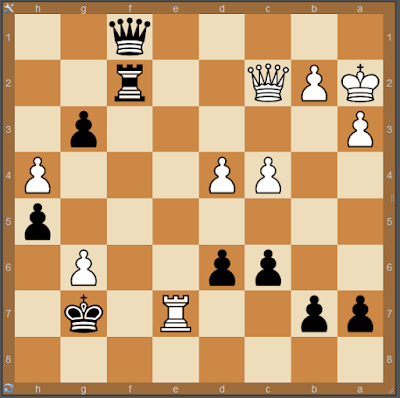dear Liza, a hole

When a position is very crowded, I have often problems to find the right continuation. The next position took me 14 minutes to find the wrong move. Diagram 1. White to move r5r1/3b1nk1/p2p1ppb/1ppPp3/4PqP1/2P1NPN1/PPB1QK1R/7R w - - 1 1 [ solution ] I'm going to ponder about what exactly is the cause of my failure, and which knowledge is needed to prevent such debacle in the future. Feel free to comment already, that is helpful. UPDATE It took quite some time to grasp what is going on exactly in this position, but with the aid of the comments I was able to unravel it in the end. The problem with this position is, that with T+E (Trial and Error) you soon dismiss 1.Nef5+ Bxf5 2.exf5 as too slow. Aox even called this move "silent", albeit between quotes. Only when everything else fails, you might come back and have a deeper look. And that is exactly what we try to avoid. How can we think about this position with as less calculation as possible? Somew...











